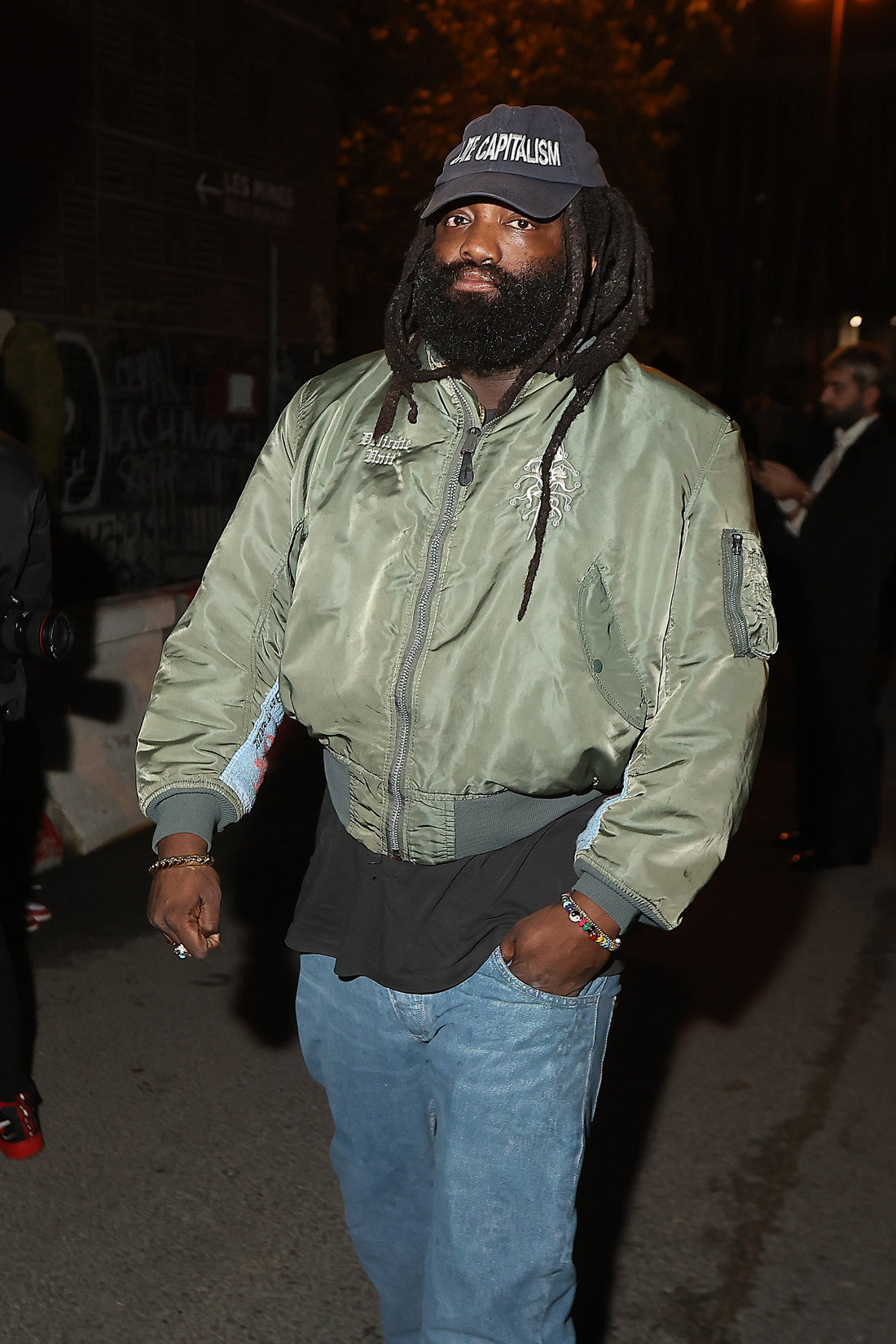
The Streetwear Revolution: How Street Culture is Redefining Luxury Fashion
Share
Over the last two decades, streetwear has evolved from a niche subculture to a global phenomenon, and its influence is now undeniably shaping the high-fashion industry. What was once considered "low culture" has ascended to the highest levels of luxury fashion, breaking down barriers and redefining what it means to be fashionable. The fusion of streetwear and high fashion is not just a trend — it’s a cultural revolution that’s here to stay.
In this post, we’ll explore how streetwear is transforming luxury fashion, how this shift is changing the industry, and why the lines between high-end couture and urban culture are blurring more than ever before.
The Roots of Streetwear and Its Rise to Power
Streetwear, with its origins in the 1980s and 1990s, grew out of a fusion of skate culture, hip-hop, graffiti art, and the rebellious spirit of the streets. Early pioneers like Shawn Stussy, Supreme, and A Bathing Ape (BAPE) were creating pieces that spoke to a youth subculture that rejected traditional norms of fashion. The key elements were comfort, utility, and a sense of individuality — all while remaining rooted in the DIY ethos.
While it started as a countercultural movement, the influence of streetwear began to grow in the late 2000s and early 2010s, especially with the rise of streetwear as a form of social currency in the digital age. Social media platforms like Instagram and YouTube allowed for the rapid spread of streetwear culture, making it accessible to a global audience. What was once exclusive to the streets of New York, Tokyo, and Los Angeles quickly became a global phenomenon.
Luxury fashion houses, once known for their elitism and exclusivity, took notice.
Luxury Fashion’s Streetwear Infiltration
The defining moment of streetwear’s impact on high fashion came with the collaboration between Louis Vuitton and Supreme in 2017. This unexpected partnership not only stunned the fashion world but also signaled that streetwear had officially entered the mainstream luxury market. The collection, featuring bold logos, premium materials, and street-inspired graphics, sold out almost instantly and was heralded as a watershed moment for both brands.
But the Louis Vuitton x Supreme collab wasn’t a one-off. It was the beginning of a new wave in luxury fashion — one where the lines between street culture and high fashion continue to blur. Soon, other luxury brands followed suit, partnering with streetwear icons or hiring streetwear designers to help them stay relevant to a younger, trend-savvy generation.
Designers like Virgil Abloh (formerly of Off-White, now the creative director of Louis Vuitton’s men’s division) have become major players in this crossover. Abloh, who built Off-White as a brand that blends street style with luxury fashion, epitomizes the merging of high-end aesthetics and street culture. Through his work at Louis Vuitton, he’s made streetwear a permanent fixture in the world of luxury fashion, bringing with him elements of graffiti, workwear, and street logos, all while maintaining the craftsmanship and prestige associated with high fashion.
Similarly, Kanye West’s Yeezy line has redefined the sneaker game, turning once-ordinary street footwear into coveted, high-ticket items. Yeezy’s influence on luxury sneakers has reshaped the sneaker resale market, where limited-edition collaborations now sell for hundreds, if not thousands, of dollars. Kanye’s blending of minimalist design and street style has made high fashion sneakers as desirable as luxury handbags.
The Role of Sneakers in the Streetwear-Luxury Fusion
Sneakers have always been a central element of streetwear culture, but their influence has skyrocketed in recent years. What was once considered a casual item reserved for athletic performance is now the centerpiece of high fashion.
Luxury fashion houses like Balenciaga, Gucci, and Prada have embraced the sneaker craze, releasing their own high-end versions of street-inspired designs. Balenciaga’s Triple S sneakers, for example, became a statement piece in the world of luxury, embodying the chunky, oversized aesthetic of streetwear, while also carrying a hefty price tag that positioned them as luxury goods.
The sneaker resale market has also exploded, with some limited-edition sneakers fetching prices that rival high-end couture. The rise of platforms like StockX and GOAT has allowed streetwear fans and sneakerheads to buy and sell rare sneakers, further cementing their role as cultural symbols.
These high-end sneaker releases are not just about footwear; they represent a larger cultural shift. Sneakers have become an emblem of status, a way to express identity, and a point of connection between street culture and the luxury world.
Streetwear’s Impact on Fashion Shows and Runways
Fashion shows, long considered the exclusive domain of high fashion, have also been influenced by streetwear. Designers like Off-White’s Virgil Abloh and Rhuigi Villaseñor of Rhude have used their runway shows to blur the lines between street style and couture. Abloh’s runways at Louis Vuitton, for instance, often feature streetwear elements such as oversized silhouettes, bold graphics, and workwear-inspired jackets, all while maintaining the elegance and refinement associated with luxury fashion.
The influence of streetwear on the runway is not just limited to designers. Streetwear icons and celebrities have increasingly taken center stage in high-fashion shows, with rappers, athletes, and influencers often being the faces of luxury brands. The Balenciaga x Ye collaborations, for example, showcase how streetwear aesthetics can easily transition from the sidewalk to the runway.
What this crossover represents is a democratization of fashion. Streetwear has moved from the margins to the center, and high fashion has had to adapt to remain relevant in an era where individuality, inclusivity, and urban culture dominate the fashion conversation.
The Future of Streetwear in Luxury Fashion
As streetwear continues to shape the luxury fashion landscape, the relationship between the two is becoming even more intertwined. More high-fashion brands are looking to streetwear icons for collaboration, while streetwear brands are adopting more sophisticated design elements and premium materials to compete in the luxury market.
This fusion is creating a more inclusive and diverse fashion landscape, where street culture, youth, and creativity hold as much weight as tradition and prestige. Fashion is no longer just about high-end couture for the elite; it’s about accessibility, authenticity, and making bold statements.
For streetwear enthusiasts, this shift means greater access to high-quality, unique pieces that speak to both personal identity and cultural history. For luxury fashion brands, it means staying relevant by embracing the bold, rebellious spirit of streetwear culture — a culture that doesn’t follow the rules but creates new ones.
How Streetwear is Shaping the Future of Fashion
Streetwear’s impact on luxury fashion is far from a passing trend. As long as the culture of the streets continues to evolve, so too will its influence on high fashion. The democratization of style is here to stay, and it’s shaping a future where the boundaries between luxury fashion and streetwear continue to collapse.
From collaborations and sneaker culture to the rise of street-inspired runways, streetwear is not just influencing high fashion — it’s re-defining it. Whether you're wearing an iconic Supreme box logo hoodie or rocking the latest designer sneakers, the future of fashion is one where street culture plays a central role.
So, the next time you throw on that graphic tee or limited-edition pair of kicks, remember: you’re not just wearing clothes — you’re wearing the future of fashion.
Embrace the Movement
How do you incorporate streetwear into your personal style? Share your thoughts with us on social media and tag your favorite streetwear-inspired pieces. The future of fashion is being written on the streets, and you’re part of the story!
